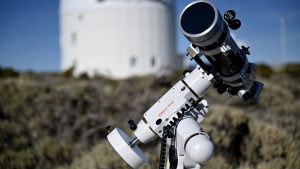Worried about winter range loss? See how over a dozen EVs compare

As more and more consumers seek out new information while they mull the possibility of transitioning to an all-electric vehicle, a slew of commonly questions arise. “Can I take my EV through the car wash? How long will it take to charge? Where is all that electricity going to come from?” and most importantly today, “Will my EV lose range in winter weather?” The short answer is yes but probably not as much as you may think … Unless perhaps you own a VW ID.4. More below!
The post Worried about winter range loss? See how over a dozen EVs compare appeared first on Electrek.
As more and more consumers seek out new information while they mull the possibility of transitioning to an all-electric vehicle, a slew of commonly questions arise. “Can I take my EV through the car wash? How long will it take to charge? Where is all that electricity going to come from?” and most importantly today, “Will my EV lose range in winter weather?” The short answer is yes but probably not as much as you may think … Unless perhaps you own a VW ID.4. More below!
Table of contents
Why do EVs lose range in colder winter weather?
Science! Current battery chemistry in lithium-ion cells requires a liquid electrolyte and reactions to occur in order for an EV’s battery modules to deliver electricity in the form of range for your journey. Colder temperatures in winter slow those physical and chemical reactions down, resulting in less available range.
Another reason for winter range loss is the efficiency of the electric motor itself. Compared to traditional internal combustion engine (ICE) vehicles, EVs are much more efficient in their energy usage. For example, much of the heat produced during engine combustion goes to waste but can also be redirected to heat the cabin of your vehicle. That’s why features like remote start are popular in colder climates, so your engine and cabin have time to warm up before you depart.
EV motors produce excess heat too, especially when charging at home and converting AC power to DC. However, that heat produced is used to warm the EV’s battery to prevent long-term damage and maximize range. Furthermore, that heat is usually not sent to the cabin to warm up those leather seats you absolutely had to have, so cabin heat can also draw from the EV’s pack, contributing to range loss.
Battery preconditioning on a home charger and the widespread implementation of heat pumps have significantly helped EVs drive longer and more efficiently in winter conditions, but until solid-state batteries truly scale, the cold will remain an inhibitor of EV range.
All that said, which EV you’re driving may also have a role in how much range you’ll be able to gather on an average winter day. As you’ll see below, not all EVs are equally equipped to handle the cold.
How the data was gathered
The study of winter range loss across thirteen popular EV models comes from Recurrent – a company that provides free battery monitoring for over 10,000 EV owners in the United States alone. Each vehicle battery is checked several times per day through onboard telematics (with the driver’s permission of course).
Those battery insights over the weeks and months allow Recurrent to draw conclusions about an individual vehicle’s current range, how that range will fluctuate in different conditions, and how it compares to hundreds or thousands of similar vehicles.
In this instance, Recurrent aggregated and anonymized data from 7,000 vehicles in its EV community, as well as tens of thousands of data points from on-board devices that provide data on energy usage. The result is both estimated and verified range loss in EVs comparing temperatures of 70? to 20-30?. Take a look.
Which of these popular EVs loses the most range in winter?
Before you dig in below, we want to ensure you understand the two types of winter range data below:
- Estimated winter range: Based on on-board telematics and reflect the OEMs proprietary range calculations and software.
- Verified winter range: Based on original Recurrent research using a combination of on-board devices and real-time usage data providing more than 35,000 datapoints.
For our best and worst below, we’ve only chosen EVs with verified winter ranges. Here are the results.
Lowest amount of verified range loss
Per verified Recurrent data, Tesla’s Model Y is the clear winner on the list, offering just 18% loss of range in freezing temperatures. The Long Range AWD version of the crossover sedan delivered 48% of its EPA estimated range in temperatures between 20-30?, compared to 66% of EPA range at 70?.
For any Tesla fans out there that say their EV doesn’t lose range in the cold, hate to break it to you but it does. Tesla’s tend to use EPA efficiency to display your remaining range, so you may not notice, but there is definitely a difference. All that said, Tesla has some of the best numbers on the list, particularly in its larger vehicles.
Highest verified range loss
The Volkswagen ID.4 tops our list as the verified worst performing EV above and it was designed by a German automaker with plenty of experience in winter conditions. Go figure.
The 82 kWh battery of Volkswagen’s all-electric SUV lost 30% of its EPA range in colder conditions. A main culprit of this energy loss is the EV’s lack of heat pump, at least in the United States. So, it must draw additional battery power to heat the cabin.
You may be able to find an ID.4 with a heat pump in Canada, or better yet, Europe. Or, you can bundle up in your favorite parka, scarf, and mittens, then warm up the cabin with your own body heat to keep that range. Who wants to try and report back to us?
Despite clear evidence that winter weather does affect EV range, there are several measures you can take to limit the toll it takes on your EV’s battery. In addition to temperature conditions, other factors like driving style and cargo also affect how much of your EV’s EPA range you’ll be able to utilize.
Here are some tips to send you off with:
FTC: We use income earning auto affiliate links. More.



